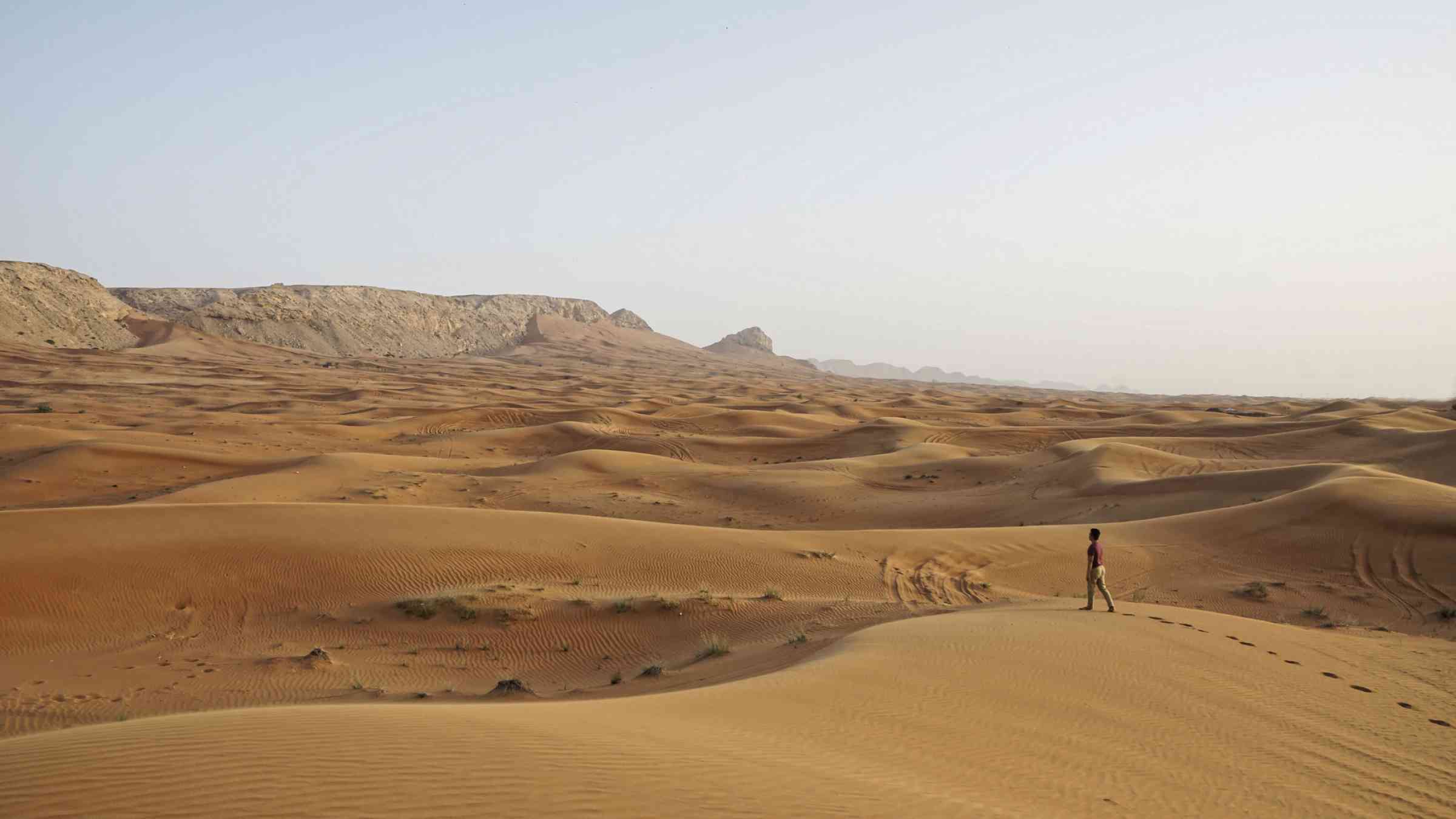Saudi Arabia strives to regreen deserts to tackle drought and land degradation

Abdullah Ibrahim Alissa is standing on a rocky outcrop in Thadiq National Park, a sprawling expanse of arid land north of Riyadh, capital of the Kingdom of Saudi Arabia.
Beneath Alissa, the park’s manager, are steep terraces lined with carefully cultivated shrubs and small trees, a flourish of greenery that has turned this place from a desert to a desired nature spot.
“I grew up in this area, and since childhood I have seen it deteriorate and become desertified,” Alissa says. “[But] through afforestation projects, protection and care, the area has completely changed.”
Rehabilitating this 600-square kilometre-park, known for its sweeping valleys, involved planting 250,000 trees and 1 million shrubs. Crews also constructed terraced dams to catch the area’s sparse rainwater.
Restoring Thadiq National Park is part of Saudi Arabia’s wider plan to regreen huge swathes of desert at home and abroad. The push is designed to tackle drought, desertification, and land degradation, which are threatening countries across West Asia and North Africa.
Three-quarters of the arable land in the region is already degraded, and 60 per cent of the population is already experiencing water scarcity, a number set to increase by 2050.
"Land is a fundamental pillar of life, and together with the ocean and the climate, is vital for sustaining life on this Earth,” says Osama Ibrahim Faqeeha, Saudi Arabia's Deputy Minister of Environment.
On 5 June, Saudi Arabia will host World Environment Day 2024, an annual celebration of the planet which this year focuses on desertification, land degradation and drought resilience.
More than 2 billion hectares of the world’s land is degraded, affecting half the global population, and threatening countless species.
Faced with more severe and prolonged droughts, sandstorms and rising temperatures, finding ways to stop dry land from becoming desert, fresh water sources from evaporating, and fertile soil from turning to dust, is now crucial, say experts.
Saudi Arabia, where rapid development and an increase in cattle grazing has led to land degradation, has made countering desertification a priority.
Launched in March 2021, the Saudi Green Initiative aims to turn 30 percent of Saudi Arabia’s land into nature reserves, plant 10 billion trees and restore 40 million hectares of degraded land.
“The country's goal is to plant 400 million trees by 2030,” says Khaled Alabdulkader, the CEO of Saudi Arabia’s National Center for Vegetation Cover Development and Combating Desertification.
“The Saudi Green Initiative demonstrates the immense potential of cultural capital and traditional wisdom for managing the natural environment,” says Susan Gardner, the Director of the Ecosystems Division at the United Nations Environment Programme (UNEP). “Such approaches, grounded in tradition and tailored to the local context, are vitally important in a region that faces multiple stressors leading to land degradation and desertification.”
Through the Middle East Green Initiative, Saudi Arabia is leading efforts to plant an additional 40 billion trees across the region with the aim of reducing soil erosion, protecting biodiversity, and mitigating the impacts of climate change. The combined 50 billion trees target represents five per cent of the global afforestation target, and the equivalent of restoring 200 million hectares of degraded land.
Saudi Arabia has also partnered with the Group of 20 nations and United Nations Convention to Combat Desertification (UNCCD) to launch the G20 Global Land Initiative, which aims to cut degradation by 50 per cent by 2040. As well, Saudi Arabia will host the 16th Conference of Parties for the UNCCD, widely seen as a pivotal moment in the global effort to end land degradation.
Globally, countries have pledged to restore one billion hectares of land – an area larger than China, under the UN Decade on Ecosystem Restoration. But if current trends persist, 1.5 billion hectares would need restoring to meet 2030 land degradation neutrality goals.
“Land protection and restoration activities deliver positive biodiversity outcomes as well as multiple benefits for people, including water and food security, public health and wellbeing, climate mitigation and adaptation,” says UNEP’s Gardner.
Back in Thadiq National Park, Alissa and other conservationists have been buoyed by the return of birds to the area, which had seen an exodus of animals as desertification intensified.
Some 100 walled water terraces, extending like steps to the bottom of valleys, capture rainwater to sustain shrubs and saplings through sweltering summers. They also stop heavy winter rains from washing productive soils away.
“We inherited water terraces from our ancestors about 400 years ago,” says Alissa. “We used this technique in the park, and it is doing an excellent job at increasing the surface water.”
Focusing on nature-based solutions to restore degraded land, the park has continued to grow trees in nurseries, planting mostly native species. “I hope we can double our work and results, increasing afforestation and replicating the achievement in other locations,” Alissa says.